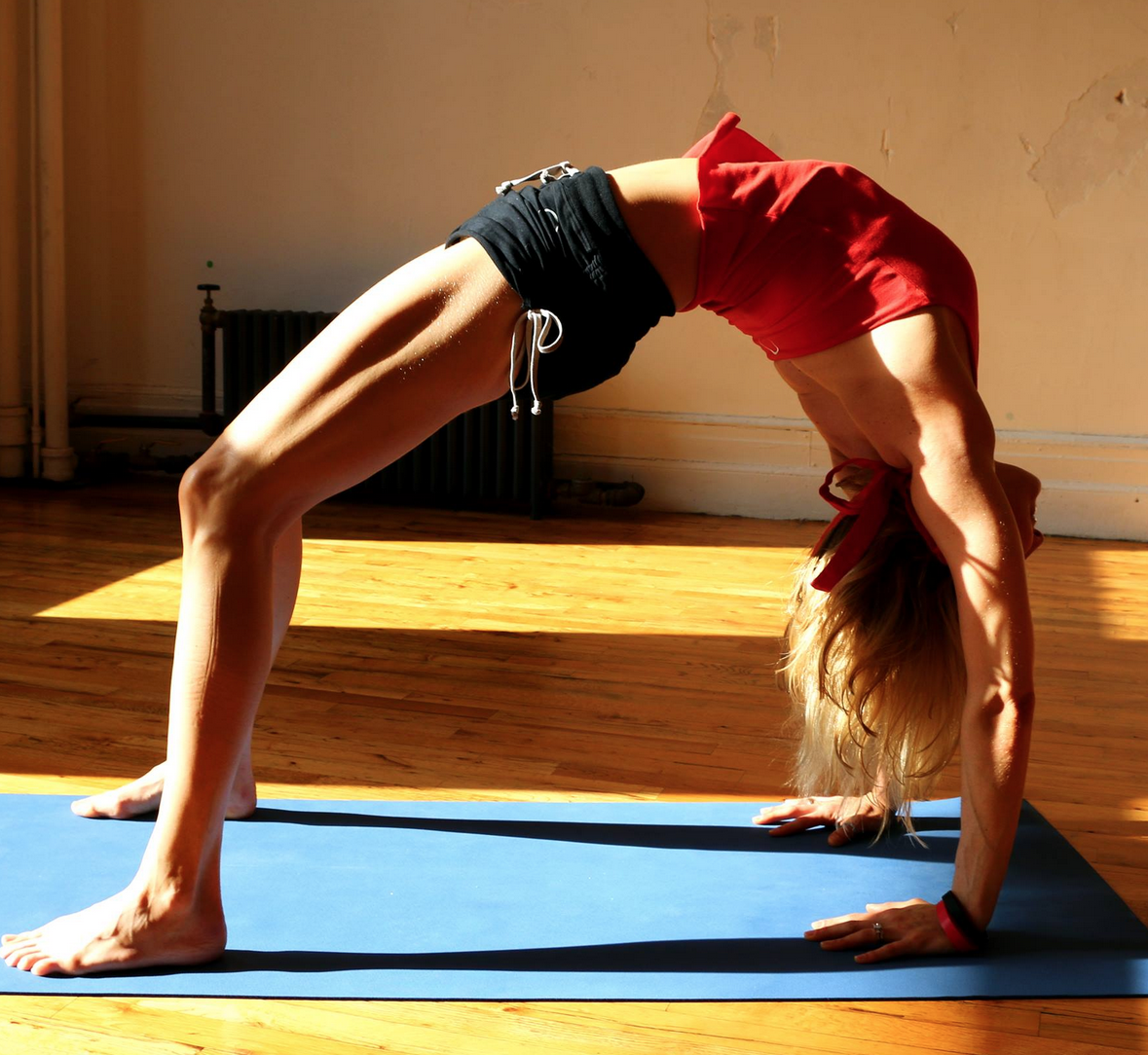Do you ever hear your yoga instructor give you a cue in class but have no idea what it means? Here is a little cheat sheet for the most transformative cues for your practice.
Try each of these, think about them, and if they work for you, incorporate them into your daily practice to infinitely improve your class!
|
Spiraling your thighs inward helps find your center, as you are drawing everything into the center with inward rotation. You can think of it as reaching your big toes in the direction of one another. |
|
|
Keep your knee in line with your ankle so it doesn’t move beyond your ankle. This protects your joints from hyperextension, thus preventing injury. Also make sure your knee isn’t winging in or out but rather is in line with the ankle to protect the entire knee. |
|
|
Pressing into your fingertips allows hands to act as “breaks” so you don’t fall over. In poses like plank or down dog, pressing into your fingertips takes pressure off your wrists. |
|
|
If I could only give two cues in an entire class, this would be one of them. We all hold so much tension in our shoulders all day long that we become unaware of it. Taking the time to shrug your shoulders up to your ears and then drop them back down as far as possible is a great practice any time of day. Shown here in chair pose, along with my other favorite cue: “Turn the corners of your mouth up!” |
|
|
When I first started yoga, I had no idea what this meant, but lengthening your tailbone prevents your bum from sticking out and your back from arching, which engages your core and protects your spine. |
|
|
Oftentimes when balancing on one leg, this is an extremely helpful reminder not to put all of the pressure on one part of your foot. This cue leads to more stability in your knee and ankle joints, and makes balancing easier. It’s sometimes given as “press into the big toe mound of your foot,” as when you have the weight in the outer edges of your feet, you are not internally rotating your thighs, protecting your sacrum and spine. Pressing into all four corners of your feet allows the body to align more naturally and protect itself. |
|
|
“Kiss your shoulder blades together” is another way to say “reach your shoulder blades toward one another,” which engages your arms and also takes those shoulders away from your ears again. |
|
|
When going upside-down, people often forget to connect all of the dots of the body and forget their legs entirely. Remembering to reach through your toes reminds you that every body part is connected and required to participate. |
|
|
This cue is given to protect the spine. If you forget and fling up from a forward fold without engaging the core (as this cue suggests), you can potentially cause injury. |



 Cue: Internal Rotation of Thigh
Cue: Internal Rotation of Thigh Cue: Keep Your Knee in Line with Your Ankle
Cue: Keep Your Knee in Line with Your Ankle Cue: Press into Your Fingertips
Cue: Press into Your Fingertips Cue: Drop Your Shoulders Away from Your Ears
Cue: Drop Your Shoulders Away from Your Ears Cue: Tuck Your Tailbone
Cue: Tuck Your Tailbone Cue: Press into All Four Corners of Your Feet
Cue: Press into All Four Corners of Your Feet Cue: Kiss Your Shoulder Blades Down and Together on Your Back
Cue: Kiss Your Shoulder Blades Down and Together on Your Back Cue: Reach Through Your Toes
Cue: Reach Through Your Toes Cue: Round Your Navel to Your Spine
Cue: Round Your Navel to Your Spine








